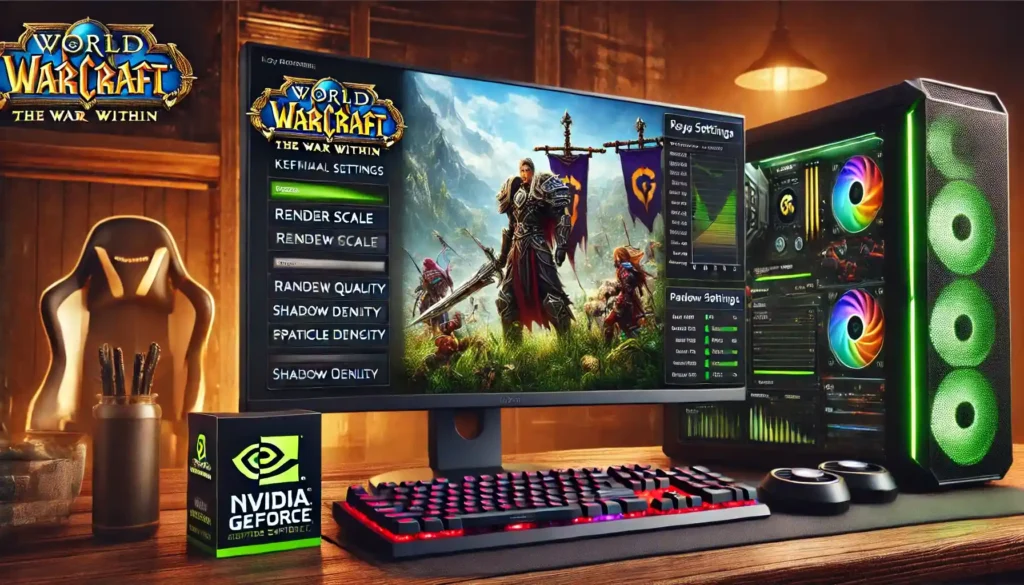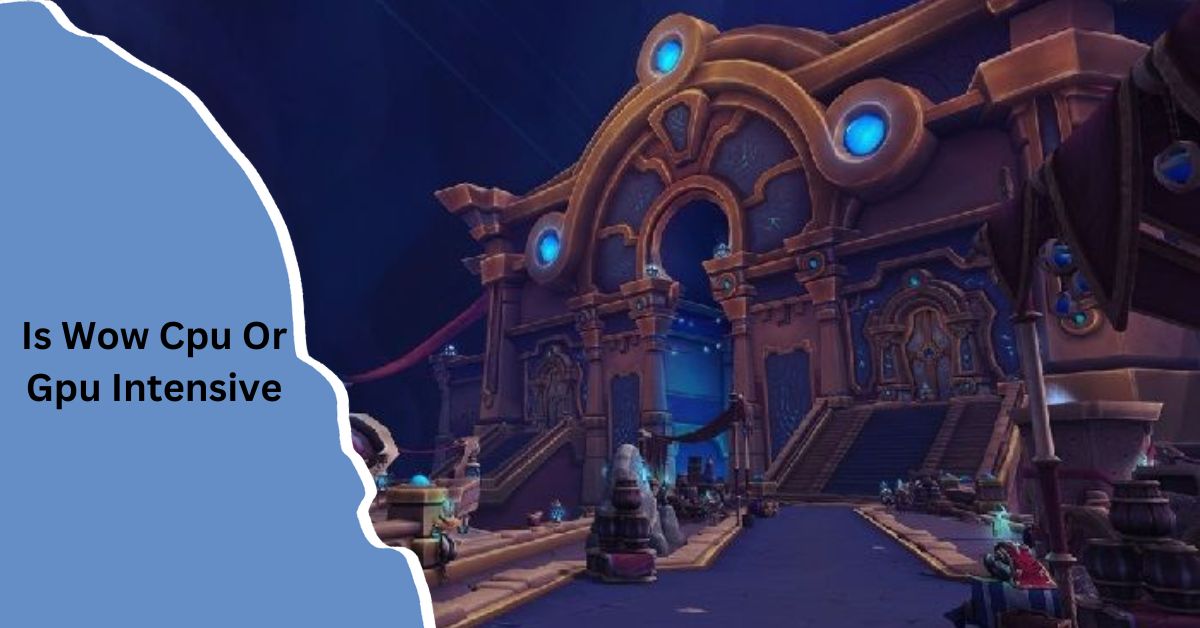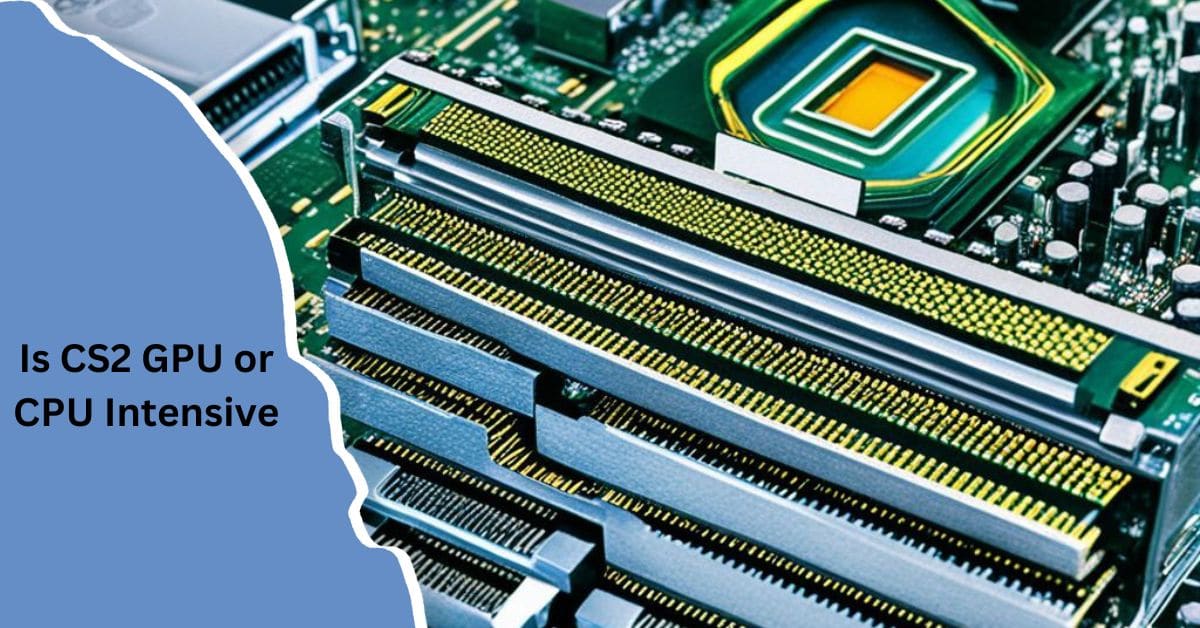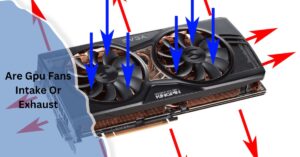Is Wow Cpu Or Gpu Intensive – Enhance Wow’s Graphics Power!
World of Warcraft (WoW) has maintained its position as one of the most popular MMORPGs for nearly two decades. As the game has evolved, so have the hardware requirements needed to enjoy a smooth gaming experience. A common question that arises among players is whether WoW is more CPU or GPU intensive. Understanding this can help gamers optimize their setups, ensuring a better experience when adventuring through Azeroth.
Understanding WoW’s System Requirements:

To fully comprehend what hardware WoW demands, it’s important to review the game’s system requirements. WoW’s developers, Blizzard, frequently update the requirements to match the game’s latest expansions. These updates affect both minimum and recommended hardware configurations.
Minimum vs. Recommended Requirements
- Minimum Requirements: These allow the game to run at a basic level. You’ll experience playable frame rates at lower settings, but you may face limitations in high-activity areas or during large-scale battles.
- Recommended Requirements: These settings allow for a much more fluid experience with improved visuals and performance, particularly during intensive gameplay moments like raids or PvP encounters.
CPU vs. GPU: What Does WoW Rely On?
While many modern games tend to heavily utilize the GPU, World of Warcraft is unique in that it leans more towards the CPU. This is because the game requires significant processing power to handle in-game mechanics, player interactions, and complex environments.
CPU Tasks
- Handling Multiple Players: In heavily populated areas or large raids, WoW’s CPU is responsible for managing all interactions between players, NPCs, and the game world.
- Game Logic: The CPU processes all background logic, including quests, AI behavior, and physics.
- World Rendering: While the GPU handles visual output, the CPU determines what should be rendered, particularly at great distances, making it crucial in open-world areas.
GPU Tasks
- Rendering Visuals: The GPU’s main task is to render WoW’s visuals, which have evolved with new expansions. This includes textures, lighting, shadows, and particle effects.
- Handling High Resolutions: Higher screen resolutions like 1440p or 4K place a much heavier load on the GPU.
- Running High Frame Rates: Achieving smooth gameplay at 60 frames per second or higher demands more GPU power, especially at higher settings.
Also Read: Can Motherboard Bottleneck Gpu – Boost Your Pc Performance!
Benchmarking WoW – CPU vs. GPU Performance
Benchmarking WoW (World of Warcraft) involves comparing the performance impact of the CPU and GPU in various in-game scenarios. During basic exploration or solo quests, the game tends to be more CPU-reliant, as it processes background tasks like AI and scripting, which don’t heavily tax the GPU.
However, in graphically intensive environments such as large raids, battlegrounds, or areas with lots of visual effects, the GPU plays a crucial role in rendering smooth graphics. The performance tends to drop in these situations if the GPU is underpowered. A balanced system that combines a strong CPU for processing and a capable GPU for rendering graphics generally results in the best gameplay experience in WoW.
CPU-Intensive Scenarios in WoW:
World of Warcraft’s reliance on the CPU becomes particularly evident in specific gameplay situations:
- Large-Scale Raids and Dungeons: Raids, especially 25- or 40-man encounters, place immense stress on the CPU due to the sheer number of calculations related to players, enemies, and environmental mechanics.
- Populated Cities: Areas like Stormwind and Orgrimmar, which host many players simultaneously, can cause noticeable performance drops due to the number of calculations the CPU must handle.
- World Events: Events such as massive PvP battles or seasonal festivals push the CPU to track numerous interactions across a large number of players and objects.
GPU-Intensive Scenarios in WoW:
Though WoW is more CPU reliant, certain scenarios place a heavier burden on the GPU:
- Maxed-Out Graphics Settings: If you increase all graphics settings to ultra, your GPU will be responsible for rendering high-quality shadows, lighting effects, and other advanced features.
- High Resolutions: Playing the game at higher resolutions like 1440p or 4K requires significantly more GPU power to maintain smooth frame rates.
- Ray Tracing: With the introduction of ray tracing in recent expansions, the GPU’s role has become even more important for rendering dynamic lighting and shadows.
Additional Tips for Optimizing WoW:

Beyond managing in-game settings, there are additional steps you can take to ensure optimal performance:
Keeping Drivers Updated
Both your CPU and GPU rely on regular driver updates to maintain compatibility and performance with new game features. Make sure to keep your drivers updated for the best experience in WoW.
Managing Background Processes
If your system is running too many background processes, it can detract from the performance of WoW. Closing unnecessary programs, disabling startup applications, and using a tool like Task Manager can free up system resources.
Cooling Solutions
High CPU and GPU usage can result in increased temperatures, which may throttle performance. Investing in adequate cooling solutions, such as additional fans or liquid cooling, can help maintain optimal temperatures during long gaming sessions.
Optimizing WoW Performance:
If you’re looking to enhance WoW’s performance, whether you’re dealing with a CPU or GPU bottleneck, here are some optimization tips:
- Adjust Graphics Settings: Lowering specific settings like shadows, view distance, and anti-aliasing can reduce GPU load without heavily impacting visual quality.
- Manage In-Game Processes: Reducing the number of active add-ons or disabling unnecessary UI elements can ease the load on your CPU.
- Resolution Scaling: If your GPU is struggling at higher resolutions, scaling down the resolution or turning off unnecessary effects like ray tracing can help improve performance.
Also Read: How to Boot Without GPU – GPU-Free Booting Guide!
Hardware Recommendations for WoW Players:
For those looking to upgrade their hardware for an improved WoW experience, here are some general recommendations:
- CPU: Prioritize single-core performance. CPUs like the Intel Core i5 or i7, or the AMD Ryzen 5 or 7 series, are good choices for WoW.
- GPU: While WoW doesn’t require top-tier GPUs, a mid-range card like the NVIDIA GTX 1660 or AMD RX 5600 XT can handle higher settings and resolutions effectively.
- RAM: WoW performs best with at least 16GB of RAM to ensure smooth multitasking and seamless gameplay.
- SSD: Upgrading to an SSD will significantly reduce load times when entering new zones or switching characters.
FAQ’s:
1. Is WoW more demanding on the CPU or GPU?
WoW is primarily CPU intensive, especially in scenarios with many players or complex game mechanics. However, the GPU is crucial for handling higher graphics settings and resolutions.
2. What kind of CPU is best for World of Warcraft?
A CPU with strong single-core performance is best for WoW. Modern processors like the Intel Core i5/i7 or AMD Ryzen 5/7 are excellent choices.
3. Do I need a high-end GPU for WoW?
No, a mid-range GPU is usually sufficient for WoW unless you’re playing at 1440p or 4K resolution with maxed-out settings.
4. Can I play WoW with integrated graphics?
While WoW can run on integrated graphics, performance will be limited, and you may need to significantly lower settings to achieve playable frame rates.
5. How can I improve WoW’s performance on my system?
Adjusting in-game settings, managing background processes, and upgrading key components like your CPU, GPU, or RAM can improve performance.
6. Does World of Warcraft benefit from multi-core CPUs?
WoW benefits from multi-core CPUs to some extent but prioritizes single-core performance. Faster cores generally offer better performance in the game.
7. Will upgrading to an SSD improve my WoW experience?
Yes, an SSD significantly reduces load times, improves texture loading, and enhances overall responsiveness.
8. How much RAM do I need for WoW?
WoW performs best with at least 16GB of RAM, which allows for smooth gameplay and multitasking.
9. Does World of Warcraft support ray tracing?
Yes, WoW supports ray tracing, but it requires a compatible GPU and can significantly impact performance.
10. Is WoW optimized for modern hardware?
Blizzard has continually updated WoW’s engine to better utilize modern hardware, but the game’s CPU-heavy nature persists, making a powerful processor key to performance.
Conclusion:
To answer the question, WoW is more CPU intensive, but the GPU still plays an important role, especially when running the game at high resolutions or with maxed-out settings. By balancing your CPU and GPU performance, optimizing in-game settings, and ensuring your system is equipped with the right hardware, you can enjoy a smooth and immersive experience in World of Warcraft.
Read More:














Post Comment